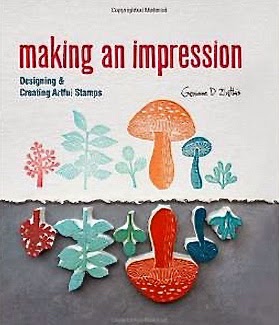Prismacolor Colored Pencil on Strathmore
Here is an illustration that I'm working on presently in my journal. The sea water is made of 4 layers of colored pencil, Cerulean Blue, Peacock Blue, Ultramarine, and Copenhagen Blue. Layering colored pencil needs patience as there are not immediate results. I work with a sharp tip and layer the pencils lightly (in a small circular motion) so as not to fill the tooth of the paper right away. The layers modify the color and give it depth and complexity.
These swatches show layered pencil. The top blue is Copenhagen Blue, the bottom is the 4 colors from above. The top red is a single color, the bottom is a combination. These differences are difficult to see on the computer, but the third sample is easier to see. The top square is black, the bottom is a combination of many colors - no black at all. You can see how the bottom color has depth . The black square is dull and less interesting. You can make a nice dark, almost black, by mixing colors. I like to do this in colored pencil pieces and paintings.




















